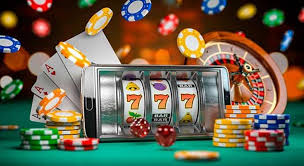
Flappy Bird took the world by storm with its simple yet addictive gameplay, and you can still relive the experience at Flappy Bird flappybirdunblocked.us. The game, developed by Vietnamese developer Dong Nguyen, became a symbol of mobile gaming in the early 2010s and remains a subject of fascination for gamers and developers alike.
The Birth of Flappy Bird
Launched in May 2013, Flappy Bird was created as a side project by Nguyen, who was inspired by the difficulty of old-school games and the charm of classic pixel art. The game’s premise is simple: players guide a small bird through a series of pipes by tapping the screen to make it flap its wings. The challenge lies in maintaining the bird’s altitude while avoiding the obstacles. Its straightforward concept allowed players to pick it up and play instantly, drawing in a massive audience.
Gameplay Mechanics
One of the key reasons behind Flappy Bird’s success is its unique gameplay mechanics. Unlike many mobile games that relied heavily on complex controls or narratives, Flappy Bird emphasizes precision and timing. Players have to tap the screen to control the bird’s flight, making the game both accessible and frustratingly difficult. Each tap propels the bird upward, while gravity brings it back down, forcing the player to find a rhythm and navigate through the gaps in the pipes. The game features an infinite level, where the goal is to achieve the highest score — a true test of skill and patience.
The Aesthetic Appeal
Flappy Bird’s visuals play a significant role in its appeal. The game employs a simple, cartoonish design that evokes nostalgia for retro video games. The bright colors and minimalistic art style allow players to focus on the gameplay without being distracted by excessive graphics. This approach stripped gaming down to its fundamentals, making it engaging and memorable.
Impact on Mobile Gaming Culture
Upon its release, Flappy Bird quickly gained popularity, topping the charts on both iOS and Android platforms. This surge in downloads can be attributed to word-of-mouth advertising and social media sharing, as players posted their high scores and challenged friends to beat them. The game started a trend of “endless” mobile games, paving the way for numerous clones and imitators, each trying to replicate its success.
The game’s addictive nature sparked fierce competition among players, who became obsessed with achieving higher scores. This led to a phenomenon where friends would gather around screens, eager to see who could master the game. The cultural impact of Flappy Bird extended beyond just gameplay; it became a meme and a talking point across various social media platforms.

The Controversy and Withdrawal
Despite its success, Flappy Bird faced considerable controversy. In early 2014, Nguyen announced he would remove the game from app stores, claiming it was too addictive and distracting. This decision only fueled the public’s obsession with the title, leading to a surge in demand. Shortly after its removal, Flappy Bird became a precious commodity, with phones that still had the game installed being sold for exorbitant prices on platforms like eBay.
Flappy Bird’s Legacy
Even after its removal from app stores, Flappy Bird’s legacy continues to influence mobile game development. Many game designers cite its success as inspiration for creating simple, addictive mechanics. Developers have attempted to harness the essence of Flappy Bird in their own games, showcasing how a straightforward concept can take the gaming world by storm.
Moreover, Flappy Bird has become an enduring symbol of the peaks and valleys of game development and the mobile gaming industry. It highlights how a game can become overwhelmingly popular due to its unique gameplay while also serving as a cautionary tale for developers regarding addiction and player engagement.
Modern-Day Revival and Clones
Flappy Bird’s influence is evident in the large number of clones and games inspired by its mechanics. Many developers have created their variations of the game, introducing different characters, environments, and additional features like power-ups and varied obstacles. Some notable examples include “Flappy Fish,” “Flappy Wings,” and “Flappy Dunk,” showcasing how the core mechanics can be diversified while maintaining that addictive quality that players love.
Notably, some developers have sought to recreate the Flappy Bird experience in other formats, such as Flappy Bird-themed merchandise and spin-offs. These efforts demonstrate that the game’s spirit continues to thrive and evolve beyond just a single app.
Conclusion
Flappy Bird revolutionized the mobile gaming landscape by demonstrating the power of simple design and engaging gameplay. Its addictive nature captured the hearts of millions worldwide and shaped the future of mobile gaming. While it may have ceased to be available on app stores, its legacy lives on through the games that followed and in the hearts of players who remember the joy and frustration it brought them. As we look toward the future of gaming, Flappy Bird serves as a reminder that sometimes, the simplest ideas can have the most significant impact. Whether you’re an old fan or a newcomer to the binding challenge, the world of Flappy Bird remains as inviting as ever.
